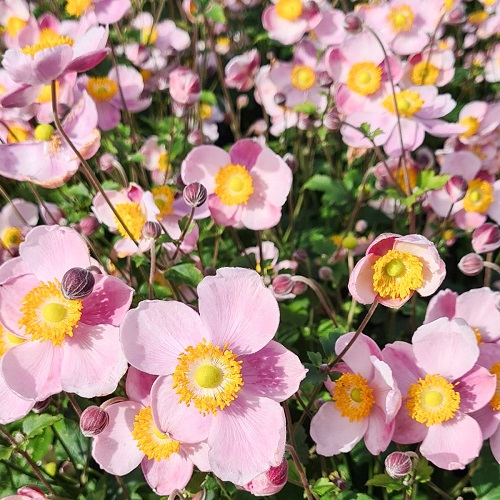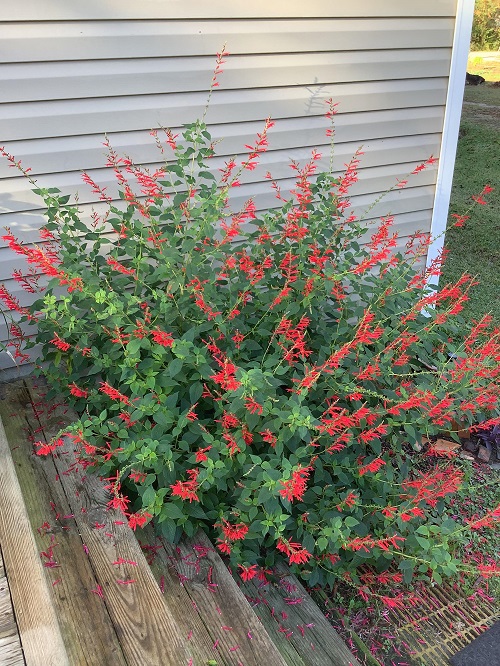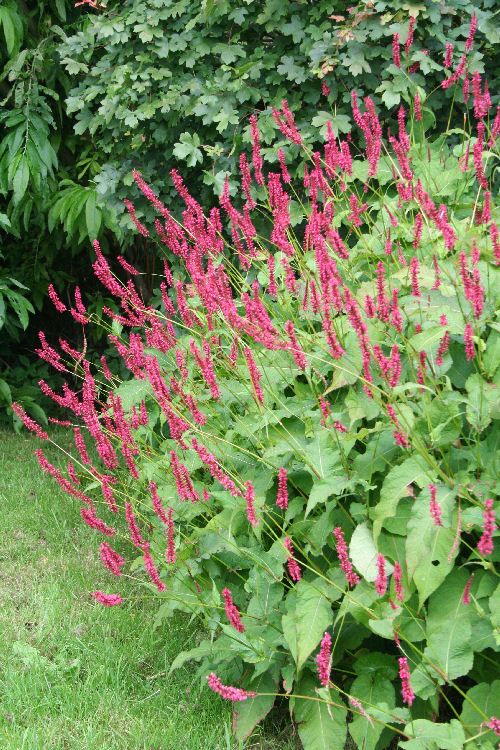Bet you never tried growing these! Check out our top picks of the Most Refreshing Fall Flowers for a stunning and unique autumn garden.
As the auburn leaves of fall take over your landscape, it’s time to give your garden a makeover. But forget about mums and daisies for a moment—though we do love these classics! Instead, try your hands on the most refreshing fall flowers to keep the thrill alive!
Most Refreshing Fall Flowers
1. Japanese Anemone
Botanical Name: Anemone x hybrida
USDA Zones: 4-8
Japanese anemone deserves a special place in your fall garden thanks to its tall, graceful blooms in shades of white and pink! Perfect for planting along edges and pathways, this beauty thrives in well-draining soil and is relatively drought-tolerant once established.
When making a mixed floral arrangement, ensure your Japanese anemone is always at the front and center for maximum elegance! When growing in the garden, plant them in a semi-shady spot, especially in hot, sunny zones.
2. Pineapple Sage
Botanical Name: Salvia elegans
USDA Zones: 8-11
Crush a flower, and you get a waft of pineapple! The edible flowers of the pineapple sage, each in whorls of four blossoms, are a favorite among hummingbirds. They have a sweet, fruity flavor that includes a mix of mint and spice.
Best grown as a perennial in warm, frost-free climates on the borders of cottages, herb, or cutting gardens, pineapple sage dies back during frost in colder regions but eventually regrows in spring.
3. Hardy Begonia
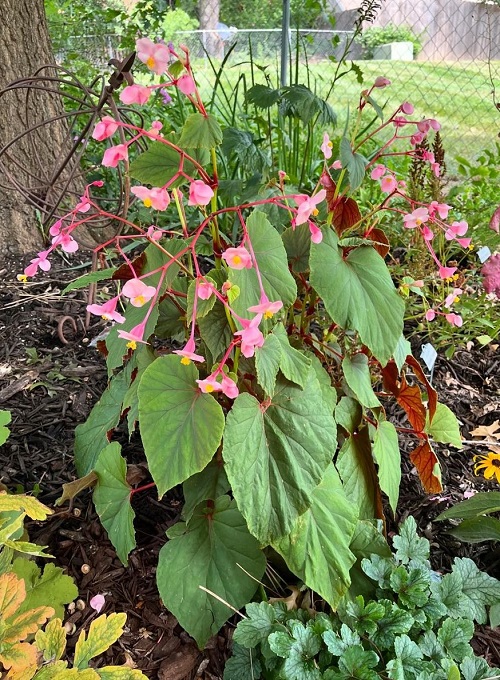
Botanical Name: Begonia grandis
USDA Zones: 6-10
Have an empty walkway or dimly lit corner in your garden? Hardy begonias are perfect filler flowers for neglected shady spaces. Sporting loose clusters of showy pink flowers that pollinators love, hardy begonias bloom all summer, fall, and even beyond with deadheading.
This flower can tolerate full shade and thrives in organically rich, moist, well-draining soil. However, mulch it heavily in winter since it cannot tolerate frost. Or, since these plants are tuberous, you could lift and store them away in colder climates.
Pro tip: Plant hardy begonias with other shade-loving plants, such as hostas and ferns, to add texture and color to the dull spaces in your garden.
4. Bluebeard
Botanical Name: Caryopteris x clandonensis
USDA Zones: 6-9
Also known as the Blue Spirea, this mint family member has gorgeous, nectar-rich blue blooms and fragrant, feathery foliage, making it perfect for a magical butterfly garden! Mass-plant it along borders, hedges, or in small groups, as this hardy shrub resists pests.
While it typically blooms in summer, some varieties flower into fall but die back fully in cold winters. Keep it in a sunny spot and plant it in loose, well-draining, loamy soil.
5. Mountain Fleece
Botanical Name: Bistorta amplexicaulis
USDA Zones: 4-8
Attracting bees, butterflies, and songbirds, this sun-loving perennial’s ‘Firetail’ cultivar has stunning red bottlebrush blooms on tall spikes that last through summer and fall. This plant works well in a cut flower garden and as accents, borders, and group plantings.
It thrives in full to partial sun and slightly moist, well-draining soil with room to grow. In summer, it will need a bit of shade. During harsh winters, mulch heavily around the plant with a few inches of pine needles, bark, and chopped leaves.
Don’t forget to check out these groundcovers that bloom in the shade as well!
6. Autumn Joy
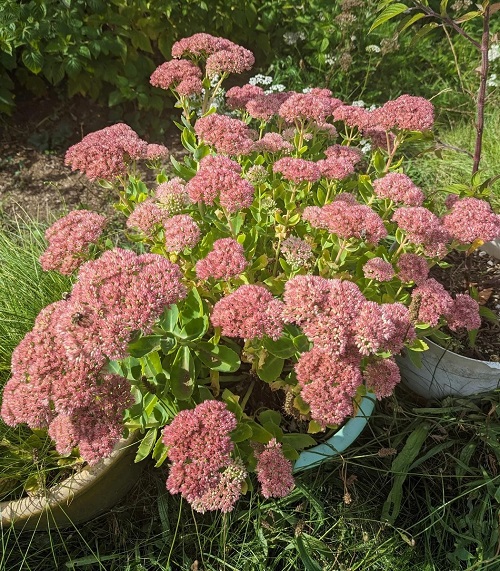
Botanical Name: Hylotelephium ‘Herbstfreude’
USDA Zones: 3-10
Autumn joy is trending in hip, modern, low-maintenance fall gardens because it is just so easy to grow! This drought-tolerant plant produces clusters of bright pink flowers through summer and fall that look excellent along a garden fountain, walkway, or patio. Due to its compact growth habit, it also makes a great container plant.
Even in winter, the browning seed heads of this species add a ton of interest to any landscape. Autumn joy can flourish in poor soil, with some gravel, as long as it is well-draining. This fall flower enjoys a bit of afternoon shade and cannot handle wet feet.
7. Obedient Plant
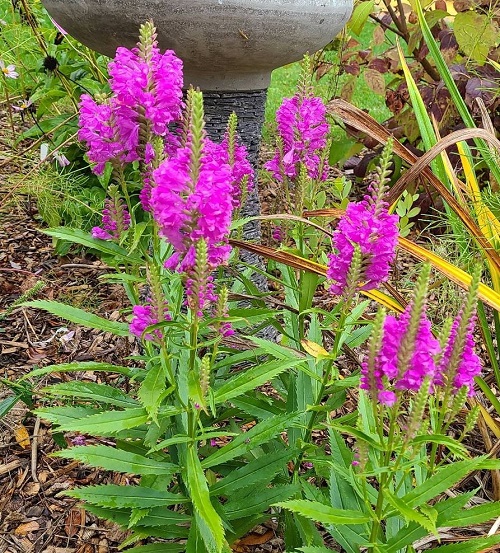
Botanical Name: Physostegia virginiana
USDA Zones: 2-9
Next on our list of the most refreshing and unique fall flowers, we have one that obeys! False Dragon head, also known as the obedient plant, has stalks that twist into whichever position you desire—obediently!
Its showy pastel pink and lilac flowers lend lasting color to your garden from mid-summer until the first frost. This rapid grower thrives in moist, well-draining, fertile soil and full to partial sun. Regular checks help prevent it from getting invasive!
8. Joe-Pye Weed
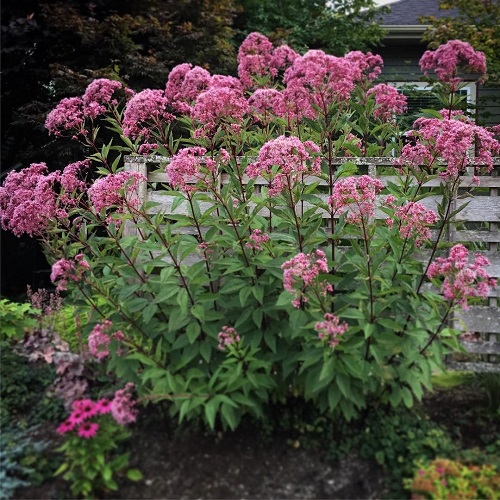
Botanical Name: Eutrochium purpureum
USDA Zones: 4-9
For a vanilla-scented garden, plant the Joe-Pye Weed! Known for its fragrant, dome-shaped tubular bloom clusters in shades of pink and purple, the plant attracts butterflies, and bees feed on its nectar—crucial in producing delicious honey!
Blooming in summer and fall, cut the plants to the ground by late winter. It prefers bright, filtered sunshine with afternoon shade and thrives in moist, humus-rich soil, and cannot tolerate hot, dry conditions.
9. Toad Lily
Botanical Name: Tricyrtis hirta
USDA Zones: 4-9
Toad lily naturally grows in moist, shaded woodlands, tropical and subtropical rainforests, forest openings, and along creeks. In summer and fall, it produces unique whitish lilac flowers with purple-red spots and a yellow throat, making it excellent cut flowers.
This shade-loving fall flower thrives in organic-rich, moist, well-draining soil and attracts a host of pollinators, including birds, bees, butterflies, and even small mammals!
10. Blue Mistflower
Botanical Name: Conoclinium coelestinum
USDA Zones: 5-10
A native plant to the Eastern United States, the mistflower flourishes alongside roads, moist ditches, and naturalized settings, especially in frost-free regions, where it spreads more.
It sports blue and lavender, nectar-filled blooms that last almost eight weeks from late summer till the first frost. However, in USDA Zones, 9 and 10, this can extend in winter as well.
Given its vigorous growth, this flower is perfect for a wildflower garden. However, do not plant the mistflower in smaller areas as it spreads rapidly by self-seeding and also its rhizomes. It thrives in moist, humus-rich soil and partial sun to shade.
Pro tip: Spring is the best time to cut back taller plants so they don’t flop down.
Which of these refreshing and unique fall flowers are you planning to try? Share your fall garden plans via the comments below!


